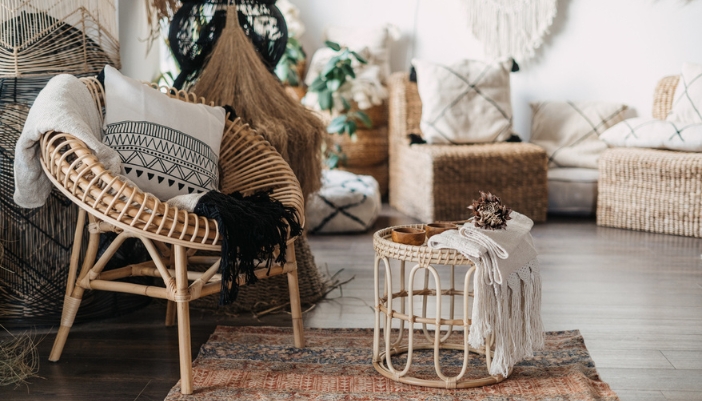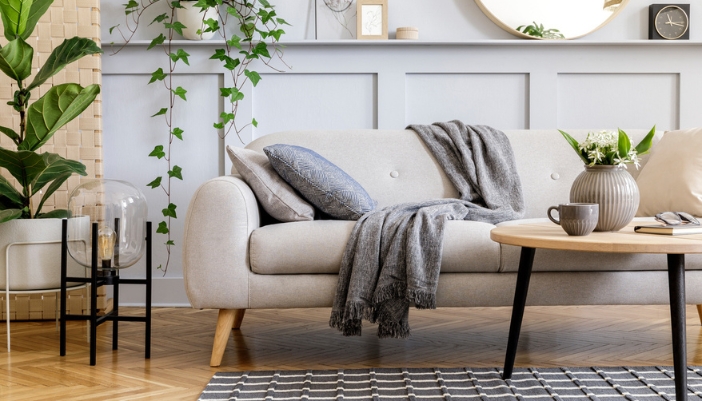Imagine stepping into a home that instantly wraps you in a warm embrace, where every corner whispers comfort and simplicity. This is the essence of Hygge, a Danish concept that has taken the world of home design by storm. Hygge (pronounced "hoo-ga") is all about creating a sense of coziness, contentment, and well-being through the simplest of pleasures. It's a lifestyle that encourages you to slow down, appreciate the moment, and find joy in the little things. In this guide, we'll explore how you can infuse your living space with Hygge's heartwarming charm, transforming it into a haven of tranquility and comfort.

Understanding Hygge: The Heart of Danish Coziness
At its core, Hygge is about appreciating the simple pleasures and moments of joy in our daily routines. It's the warmth of a candlelit dinner, the comfort of a soft blanket on a chilly evening, or the tranquility of a quiet morning with a cup of coffee. This philosophy extends beyond mere home decoration; it's a holistic approach to living that emphasizes the importance of creating a space where one can relax, rejuvenate, and connect with loved ones.
Incorporating Hygge into home design means creating an environment that is not only visually appealing but also emotionally nurturing. It's about choosing elements that bring comfort and joy, whether it's through soft lighting, cozy textiles, or simple, uncluttered spaces. The goal is to create a home that feels like a sanctuary, a place where the stresses of the outside world melt away, and where one can truly feel at peace.
By embracing the principles of Hygge, you can transform your living space into a haven of comfort and happiness, reflecting the true essence of this cherished Danish tradition.

Crafting Comfort: Building a Hygge Atmosphere
Creating a comfortable atmosphere is at the heart of the Hygge philosophy. It's about crafting spaces that evoke a sense of calm, warmth, and relaxation. This doesn't necessarily mean filling your home with luxurious items; rather, it's about choosing elements that contribute to an overall feeling of comfort and ease.
- Soft Lighting: The right lighting can transform the mood of a room. Opt for warm, soft lighting to create a cozy and inviting atmosphere. Think dimmable lamps, candles, or even string lights that add a gentle glow to your space.
- Cozy Textiles: Layering different textures can add depth and warmth to your home. Incorporate plush throws, soft cushions, and comfortable rugs that invite you to curl up and relax. Choose materials that feel good against the skin, like wool, cotton, or velvet.
- Soothing Colors: A neutral color palette can have a calming effect on the mind and body. Soft whites, creams, light grays, and earthy tones create a serene backdrop that soothes the senses. These colors also make it easier to mix and match different textures and elements.
- Personal Touches: Personalize your space with items that have sentimental value or bring you joy. This could be family photos, a cherished collection, or artwork that resonates with you. These personal touches make your space uniquely yours and enhance the feeling of comfort.
- Clutter-Free Environment: A cluttered space can lead to a cluttered mind. Embrace the Hygge principle of simplicity by keeping your space tidy and organized. This doesn't mean your home has to be minimalist, but rather thoughtfully arranged with only the items that serve a purpose or bring you joy.
By focusing on these elements, you can create a home that not only looks inviting but also feels deeply comforting and nurturing, embodying the true spirit of Hygge.

The Palette of Peace: Choosing Hygge Colors
The color palette is a crucial aspect of Hygge home design, emphasizing a sense of tranquility and natural beauty. The Hygge color scheme typically revolves around soft, muted tones that evoke a sense of peace and simplicity. Here's how to curate a Hygge-inspired color palette for your home:
- Neutral Foundations: Start with a base of neutral colors. Whites, creams, light grays, and soft beiges are perfect for walls and large furniture pieces. These colors create a calming backdrop, making your space feel open and airy.
- Earthy Accents: Incorporate earthy tones like taupe, moss green, or dusty blues to add depth and warmth. These colors are inspired by nature and help to bring the outdoors in, creating a serene and grounded atmosphere.
- Soft Pastels: For a touch of gentle color, consider soft pastels. Pale pinks, light lavenders, and muted greens can add a subtle vibrancy without overwhelming the senses. These hues work well in textiles, decorative accents, or wall art.
- Wood Tones: Wood is a key element in Hygge design. Incorporate various wood tones through furniture, flooring, or decorative pieces. From light, natural woods to richer, darker hues, wood adds warmth and texture to your space.
- Metallic Accents: While Hygge emphasizes simplicity, a touch of metallic can add a hint of elegance. Opt for muted metals like brushed bronze, matte silver, or soft gold in light fixtures, hardware, or decorative objects.
By carefully selecting colors and materials that resonate with the Hygge philosophy, you can create a home that feels both soothing and harmonious, a perfect sanctuary for relaxation and rejuvenation.

Textures and Touches: The Hygge Way
Incorporating natural materials, textures, and elements of greenery is a fundamental aspect of Hygge home design. This approach not only adds visual interest and warmth but also helps to create a connection with nature, enhancing the overall sense of comfort and tranquility in your home. Here's how to blend these elements seamlessly:
- Fabrics and Rugs: Soft, cozy textiles are essential in a Hygge home. Think plush throw blankets, cushiony pillows, and thick, woven rugs. These elements add layers of texture and comfort, inviting relaxation and a sense of well-being. Choose materials like wool, cotton, or fleece in neutral or earthy tones to maintain the Hygge aesthetic.
- Natural Materials: Wood, stone, leather, and clay are perfect for adding a touch of nature to your space. Use wooden furniture for warmth, stone accents for a touch of rustic elegance, leather for durability and texture, and clay or ceramic pieces for artisanal charm. These materials not only look beautiful but also bring an organic, earthy feel to your home.
- Florals and Greenery: Plants and flowers are a simple yet effective way to introduce life and color into your home. They not only purify the air but also have a calming effect on the mind. Opt for low-maintenance indoor plants, fresh flowers in simple vases, or even dried botanicals for a lasting touch of green. Place them in areas where you spend the most time to enjoy their beauty and benefits daily.
By thoughtfully adding these natural elements and textures, you can create a space that embodies the essence of Hygge – a home that's not just visually appealing but also emotionally nurturing, fostering a sense of comfort, contentment, and connection to the natural world.
As we've journeyed through the art of Hygge, it's clear that this Danish concept is more than just a design trend; it's a philosophy for living. By embracing Hygge in your home, you're not just redecorating; you're reshaping your environment to nurture happiness, comfort, and a deep sense of well-being. From the soothing color palettes to the embrace of nature and textures, every aspect of Hygge contributes to creating a space where you can truly unwind and feel at peace. So, as you consider bringing a touch of Hygge into your home, remember that it's all about creating a space that feels like a warm, welcoming embrace. Let your home be a sanctuary where simplicity meets comfort, and every day feels a little cozier.
